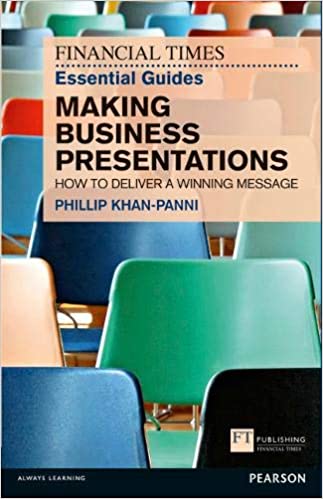Departmental Heads are often in the spotlight to inform staff of rules, regulations and reasons. Those involved with sales have to make New Business Presentations. Here’s a simple 8-point guide to getting it right.
First, let me urge you to lose the idea that such presentations are to impart information. If that is your objective, send an email. It’s quicker, cheaper, more efficient.
The true purpose of a presentation—any presentation—is to bring about change. Change in the thinking, attitude or behaviour of those present. So here’s a brief outline of the essentials of making a presentation that’s worth hearing.
There are eight important ingredients in a successful presentation, indicated by my acrostic, OH AM I SAD (which you will be if you don’t do something like this).
O: Outcome or Objective
Start with the end in view. What do you want people to do when you have finished? Write it down.
H: Hook
Sometimes called the Grabber. It’s something that you do or say to grab attention at the start, in much the same way as the Headline on a press advertisement. It says, “Stop! Pay attention, this is for YOU!”
A: Audience
Make it directly relevant to the group you are addressing, taking account of their needs, interests and anxieties. If you have a multi-cultural audience, keep the language simple and try to avoid too much use of metaphor.
M: Message
It’s not your information that matters, but rather its significance. Tell them what they should think about what you are saying, and how it will affect them. Summarise your message in a single sentence that you want people to carry away and remember. Write it down and make it the focus of your presentation.
I: Interest
You have their attention, and you are focused on where you want to lead them. Maintain the flow and keep their attention by relating everything to their interests. For every fact you put across, answer the “So what?” question.
S: Structure
It is essential to follow a structure, both to keep yourself on track and to enable your listeners to follow you. A simple structure, such as Past, Present, Future, will be easy for them to remember and reconstruct your presentation.
A: Action
What did you want them to do after hearing you? Make it clear. Don’t expect them to work it out for themselves.
D:Delivery
Pay attention to the way in which you deliver your presentation. Spend time rehearsing, listen to a recording of your presentation and make sure you are not boring, then make an effort to be heard clearly. Every presentation is a performance, and no one has the right to be boring.
Follow these guidelines and you’ll be worth hearing.
Contact us
Please call or email us for details of any course, and for our fees. All our courses can be in-house or open, and online training modules will shortly be available. They will give you access to our training in a low-cost and convenient way.
enquiries: +353 (0)89 611 7427
alternative: +44 (0)7768 696254
Skype (free): PhillipKP
email: phillip@phillipkhan-panni.com

